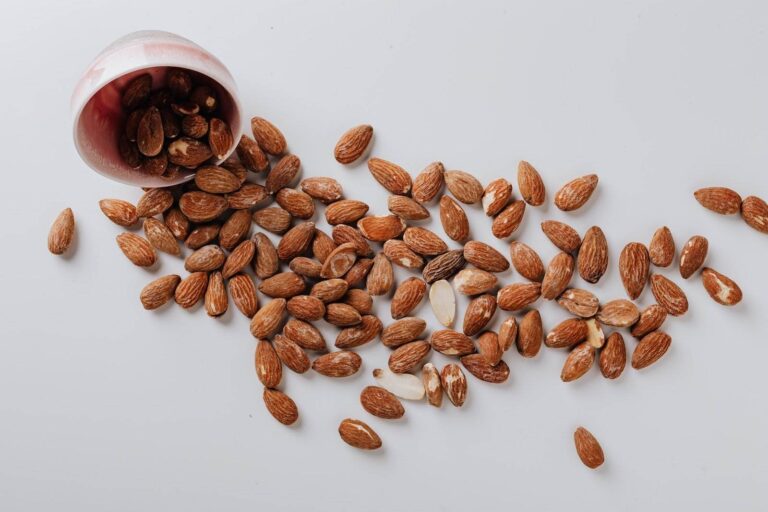Table of Contents
Introduction
Iron, an essential mineral, plays a critical role in various bodily processes. However, finding the perfect balance between deficiency, overload, and optimal iron levels can be challenging. This blog post aims to unravel the “iron equation” and provide insights on maintaining this balance for a healthy lifestyle.
The Importance of Iron in the Body
Iron contributes to several key functions:
- Oxygen transport: Iron is part of hemoglobin, responsible for carrying oxygen throughout the body.
- Energy production: Iron aids in producing adenosine triphosphate (ATP), the primary energy source for cells.
- Immune system support: Adequate iron levels are required for proper immune system function.
The Challenge of Maintaining Optimal Iron Levels
Striking the perfect balance in iron levels is complex. Insufficient iron can lead to anemia, fatigue, and decreased immune function, while excessive iron can cause organ damage.
Factors such as age, gender, diet, and existing health conditions contribute to the complexity of maintaining optimal iron levels. For instance:
- Women of childbearing age and pregnant women often require more iron.
- Individuals with specific health conditions, like hemochromatosis, are at a higher risk of iron overload.
Understanding the Iron Equation: The Aim of this Blog Post
Navigating the nuances of the iron equation is essential for maintaining good health. This blog post will delve into the intricacies of iron deficiency, overload, and optimal levels, offering practical tips and guidelines on striking the right balance.
Iron Deficiency: Symptoms, Causes, and Consequences
Symptoms of Iron Deficiency
Iron deficiency can manifest in various ways, including:
- Fatigue: Constant tiredness or exhaustion.
- Pale skin: Paleness on the face, inner lower eyelids, nails, and gums.
- Shortness of breath: Difficulty breathing after mild exertion.
- Rapid heartbeat: Fast or irregular heartbeat, especially after physical activity.
- Brittle nails: Easily breakable nails with ridges or grooves.
- Restless legs syndrome: Uncomfortable sensations and an uncontrollable urge to move the legs.
Common Causes of Iron Deficiency
Several factors can contribute to iron deficiency:
- Inadequate iron intake: Diet lacking in iron-rich foods.
- Blood loss: Excessive bleeding from injuries, surgeries, or menstrual periods.
- Malabsorption: Conditions impairing the body’s ability to absorb iron.
- Pregnancy: Increased demand for iron during pregnancy.
- Medications: Certain medications hindering iron absorption.
Impact of Iron Deficiency on Overall Health
Iron deficiency can have far-reaching consequences:
- Physical performance: Impaired muscle function and decreased endurance.
- Immune system: Weakened immune system, leaving the body vulnerable to infections.
- Cognitive function: Negative effects on memory, attention, and learning abilities.
Severe iron deficiency can lead to anemia, affecting the body’s ability to deliver oxygen to tissues and organs. It’s crucial to pay attention to your body’s signals and seek appropriate medical advice and treatment to prevent long-term damage.

Iron Overload: Symptoms, Causes, and Consequences
Iron overload, or hemochromatosis, can lead to severe health issues. We’ll explore the symptoms, causes, and consequences in a concise manner.
Symptoms of Iron Overload
Symptoms of iron overload can vary, and some individuals may not exhibit any. Common symptoms include:
- Fatigue and weakness
- Joint pain
- Abdominal pain
- Loss of libido or impotence
- Diabetes-like symptoms
- Darkening or bronzing of the skin
- Irregular heartbeat
Consult a healthcare professional if you suspect iron overload.
Common Causes of Iron Overload
Iron overload can occur due to:
- Genetic factors: Hereditary hemochromatosis leads to excessive iron absorption.
- Excessive iron supplementation: Overconsumption of iron supplements can cause iron overload. Always follow the recommended dosage.
- Frequent blood transfusions: Repeated blood transfusions can cause iron buildup, especially in individuals with conditions like thalassemia or sickle cell anemia.
- Dietary factors: A diet extremely high in iron-rich foods could contribute to iron overload. Maintain a balanced diet.
The Impact of Iron Overload on Overall Health
Excessive iron deposits in organs can lead to damage. Potential health issues include:
- Liver damage: Iron overload can cause liver damage, progressing to cirrhosis or liver cancer if untreated.
- Heart problems: Excess iron in the heart can cause irregular heartbeats, heart failure, or sudden death.
- Pancreatic damage: Iron buildup in the pancreas may lead to diabetes due to disrupted insulin production.
- Hormonal imbalances: Excessive iron can affect hormone production, resulting in issues like hypothyroidism or hypogonadism.
Early diagnosis and treatment can prevent or mitigate these health issues. Balanced iron intake is crucial for overall health.
Optimal Iron Levels: What You Need to Know
Achieving the right balance of iron intake is crucial for good health. This section explores the recommended daily intake, factors influencing individual requirements, and the importance of maintaining optimal iron levels.
Recommended Daily Intake of Iron
Daily iron requirements depend on age, gender, and physiological state:
- Adult men & postmenopausal women: 8 mg
- Menstruating women: 18 mg
- Pregnant women: 27 mg
- Infants: 0.27 mg
- Toddlers (1-3 years): 7 mg
- Children (4-8 years): 10 mg
- Adolescents: 8-11 mg
Factors Affecting Individual Iron Requirements
Iron needs vary based on:
- Dietary habits: Vegetarians & vegans need up to 1.8 times more iron.
- Age & gender: Requirements fluctuate throughout life stages.
- Physical activity: Athletes may require additional iron.
- Health conditions: Certain conditions increase iron needs.
- Genetic factors: Genetic disorders can alter iron metabolism.
Importance of Maintaining Optimal Iron Levels for Health
Balancing iron intake is essential:
- Insufficient iron: anemia, fatigue, compromised immune function.
- Excessive iron: organ damage from iron overload.
Optimal iron levels support cognitive function, immunity, and physical performance. Balance is key for overall well-being.

Food Sources and Supplements: Meeting Your Iron Needs
Iron-rich Food Sources
Iron is found in two forms: heme (animal sources) and non-heme (plant sources).
Heme iron sources:
- Red meat (beef, lamb, venison)
- Poultry (dark meat, turkey, chicken thighs)
- Fish (shellfish, tuna, sardines)
Non-heme iron sources:
- Leafy green vegetables (spinach, kale, collard greens)
- Legumes (lentils, beans, chickpeas)
- Fortified grains (cereals, bread, pasta)
- Nuts and seeds (almonds, pumpkin seeds, cashews)
Pros and Cons of Iron Supplements
Pros:
- Effective for correcting deficiency
- Convenience for those with dietary restrictions
Cons:
- Potential side effects (gastrointestinal issues)
- Overdose risk (iron overload)
- Absorption interference (other nutrients and medications)
Consult a healthcare professional before starting supplementation.
Tips for Maximizing Iron Absorption
- Combine heme and non-heme sources (e.g., spinach with grilled chicken)
- Include vitamin C-rich foods (e.g., bell peppers, oranges, strawberries)
- Be mindful of absorption inhibitors (e.g., phytates, calcium, tannins)
- Cook in cast-iron cookware to increase iron content in food
Incorporate these strategies for better iron absorption and balanced iron levels.
Monitoring Your Iron Levels: Tests and Recommendations
Navigating iron balance can be challenging. It’s essential to monitor your iron levels regularly to ensure optimal health. In this section, we’ll explore various tests, when to consult a healthcare professional, and tips for maintaining balanced iron levels.
Types of Tests to Measure Iron Levels
Various tests help determine if your iron levels are within the recommended range:
- Serum Iron Test: Measures circulating iron, providing information on absorption and use.
- Total Iron Binding Capacity (TIBC): Calculates maximum iron blood can carry, indicating storage capacity.
- Serum Ferritin: Reflects stored iron, providing insight into iron reserves.
- Hemoglobin: Measures vital protein in red blood cells, indirectly indicating iron status.
These tests may need collective interpretation for a comprehensive understanding of your iron status.
When to Consult a Healthcare Professional
Consult a healthcare professional if you:
- Experience symptoms suggestive of iron deficiency or overload (fatigue, weakness, shortness of breath, joint pain).
- Have a pre-existing medical condition affecting iron levels (anemia, hemochromatosis, inflammatory bowel disease).
- Are pregnant or breastfeeding (increased iron requirements).
- Have dietary restrictions or a predominantly plant-based diet (tailored iron intake recommendations).
Consult a healthcare professional before making significant changes to your diet or supplement regimen.
Recommendations for Maintaining Balanced Iron Levels
Achieving balanced iron levels requires good nutrition, proper supplementation, and regular monitoring:
- Consume iron-rich foods: Include red meat, poultry, fish, legumes, and fortified cereals.
- Pair iron-rich foods with vitamin C: Vitamin C enhances iron absorption, so consume vitamin C-rich foods with iron-rich meals.
- Be mindful of iron inhibitors: Limit calcium, tannins, and phytates intake or consume separately from iron-rich meals.
- Monitor your iron levels: Regularly check your iron levels using tests mentioned and consult a healthcare professional if needed.
By following these recommendations, you’ll tackle the iron equation and enjoy the benefits of a well-balanced diet.

Special Considerations: Iron in Different Life Stages and Conditions
Iron requirements vary depending on factors like life stage and health conditions. In this section, we’ll explore iron needs for pregnant individuals, athletes, and people with specific health conditions.
Iron Needs During Pregnancy
Pregnancy significantly increases iron requirements due to factors like blood volume expansion, placental growth, and fetal development.
- Pregnant individuals may need 27 milligrams of iron daily.
- Consult a healthcare provider for personalized recommendations.
Tip: Consume vitamin C-rich foods with iron-rich foods for better iron absorption.
Iron Requirements for Athletes
Athletes, particularly endurance athletes, face unique iron demands due to factors like sweat, gastrointestinal bleeding, and red blood cell breakdown.
- Athletes might need more iron than sedentary individuals.
- Monitor iron levels and consult with a sports nutritionist or healthcare professional.
Example: Female marathon runners may need 30-70% more iron than sedentary females.
Managing Iron Levels in Specific Health Conditions
Iron management is crucial for individuals with health conditions like hemochromatosis, celiac disease, Crohn’s disease, or iron-deficiency anemia.
- Hemochromatosis: Minimize iron intake and avoid supplements containing iron.
- Celiac disease and Crohn’s disease: May require supplemental iron under medical supervision.
- Iron-deficiency anemia: Healthcare providers may prescribe iron supplements and recommend dietary changes.
Collaborate with healthcare professionals to determine appropriate iron management strategies. By understanding unique iron needs, individuals can maintain optimal iron levels for better overall health.
Conclusion
The Iron Equation: A Brief Recap
We’ve explored the complex world of iron in our health, discussing the challenges of maintaining an optimal balance between deficiency and overload. We examined symptoms, causes, and consequences of both deficiency and overload, as well as optimal iron levels for different individuals.
Balanced Iron Levels: A Crucial Aspect
Balancing iron levels is vital for physical health, impacting energy levels and cognitive function. Maintaining balance is crucial, as both extremes can lead to serious health complications.
Key tips to remember:
- Consume a diet rich in iron (e.g., red meat, poultry, fish, legumes, leafy greens).
- Take iron supplements judiciously, if recommended by a healthcare professional.
- Enhance iron absorption by pairing iron-rich foods with vitamin C sources.
- Consult a healthcare professional to monitor iron levels and adjust intake accordingly.
Prioritizing Iron Intake and Monitoring
Emphasize the importance of prioritizing iron intake and monitoring to improve physical health and face daily life’s demands.
Think of it like tending to a garden, supplying our bodies with the appropriate balance of iron to thrive. Nourish ourselves with iron-rich foods, monitor our levels regularly, and make adjustments as needed to unlock the full potential of this mighty mineral and enjoy optimal health.
FAQs
Why is iron important for the body?
Iron plays a critical role in various bodily processes, including oxygen transport, energy production, and immune system support.
What are the symptoms of iron deficiency?
Symptoms of iron deficiency can include fatigue, pale skin, shortness of breath, rapid heartbeat, brittle nails, and restless legs syndrome.
What are the symptoms of iron overload?
Symptoms of iron overload can include fatigue, joint pain, abdominal pain, loss of libido or impotence, diabetes-like symptoms, darkening or bronzing of the skin, and irregular heartbeat.
How can I maintain optimal iron levels?
You can maintain optimal iron levels by consuming iron-rich foods, taking supplements if needed, and monitoring your iron levels regularly. It’s important to maintain a balanced diet and consult with a healthcare professional before making significant changes to your diet or supplement regimen.
What are some iron-rich foods?
Iron-rich foods include red meat, poultry, fish, legumes, leafy green vegetables, fortified grains, nuts, and seeds.
How can I maximize iron absorption?
You can maximize iron absorption by combining heme and non-heme sources, including vitamin C-rich foods, being mindful of absorption inhibitors, and cooking in cast-iron cookware.
Who is at risk for iron deficiency or overload?
Women of childbearing age, pregnant women, individuals with specific health conditions like hemochromatosis, and those with inadequate iron intake are at risk for iron deficiency or overload.
How can iron deficiency or overload affect my health?
Iron deficiency can lead to anemia, impaired physical performance, weakened immune system, and negative effects on cognitive function. Iron overload can cause organ damage, liver damage, heart problems, pancreatic damage, and hormonal imbalances.
How often should I monitor my iron levels?
It’s recommended to monitor your iron levels at least once a year, or more frequently if you have a pre-existing medical condition affecting iron levels or are at a higher risk for deficiency or overload.
